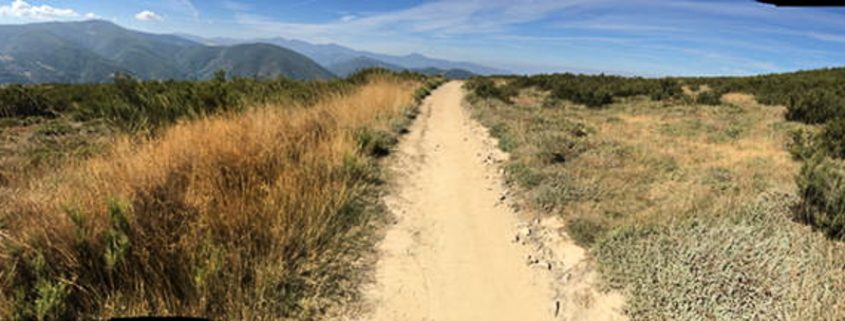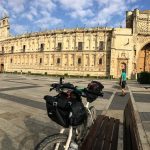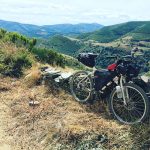Day 9: Entering the Cantabrian Mountains (Astorga to Ponferrada)
Distance: 36.6 mi / 59km
Climbing: 2986 ft / 910m
Even though today’s distance was short, so many different places and experiences make it feel like I’ve covered more ground than the past few long days on the Meseta.
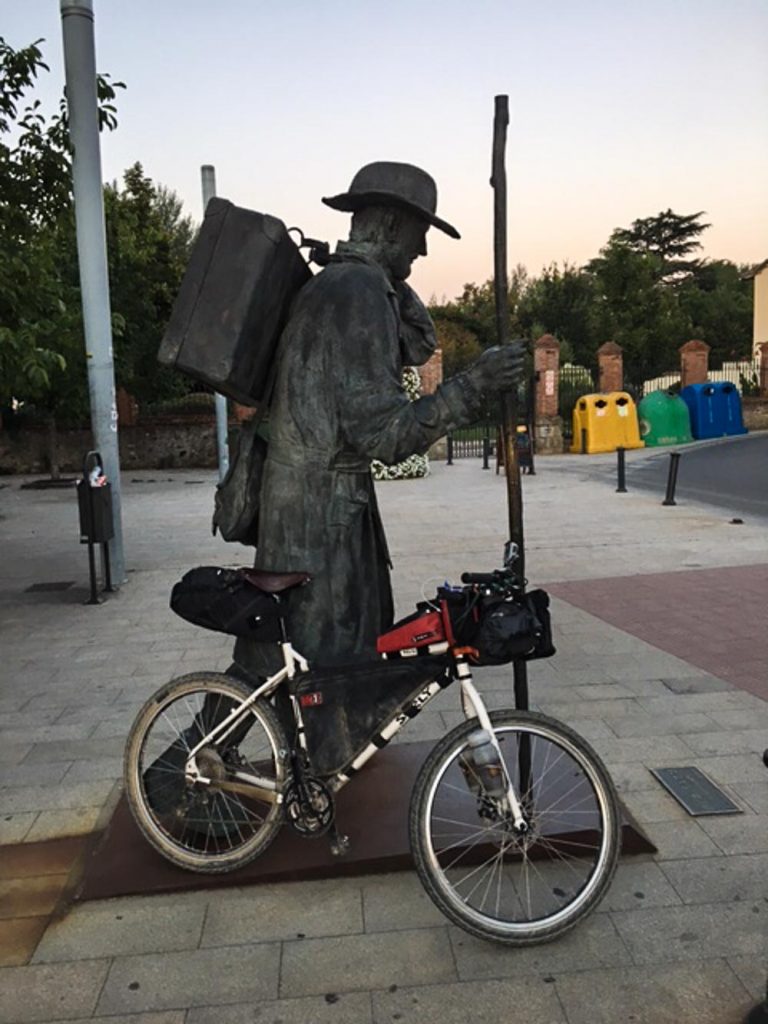
Pilgrim wishing he had a bike
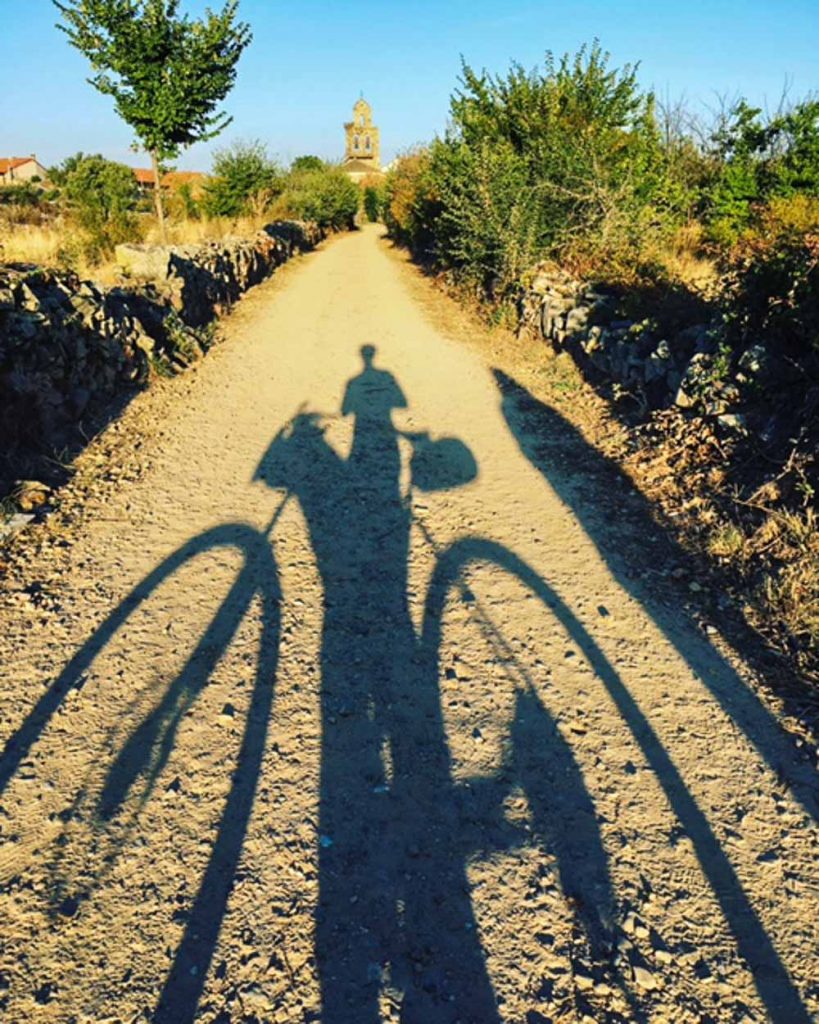
Santa Catalina, good place for a coffee break.
From Astorga, it’s an easy climb (2-4% grade) into the Cantabrian Mountains up to the highest point on the Camino Francés (around 1550m). Near the top of the climb is the Cruz Ferro, a famous iron cross where pilgrims leave a stone or another item behind to symbolize letting go of a burden they have been carrying. The path then continues along the mountain, and then descends quickly down to Molinaseca and the valley below, offering one of the most scenic days on the entire route.
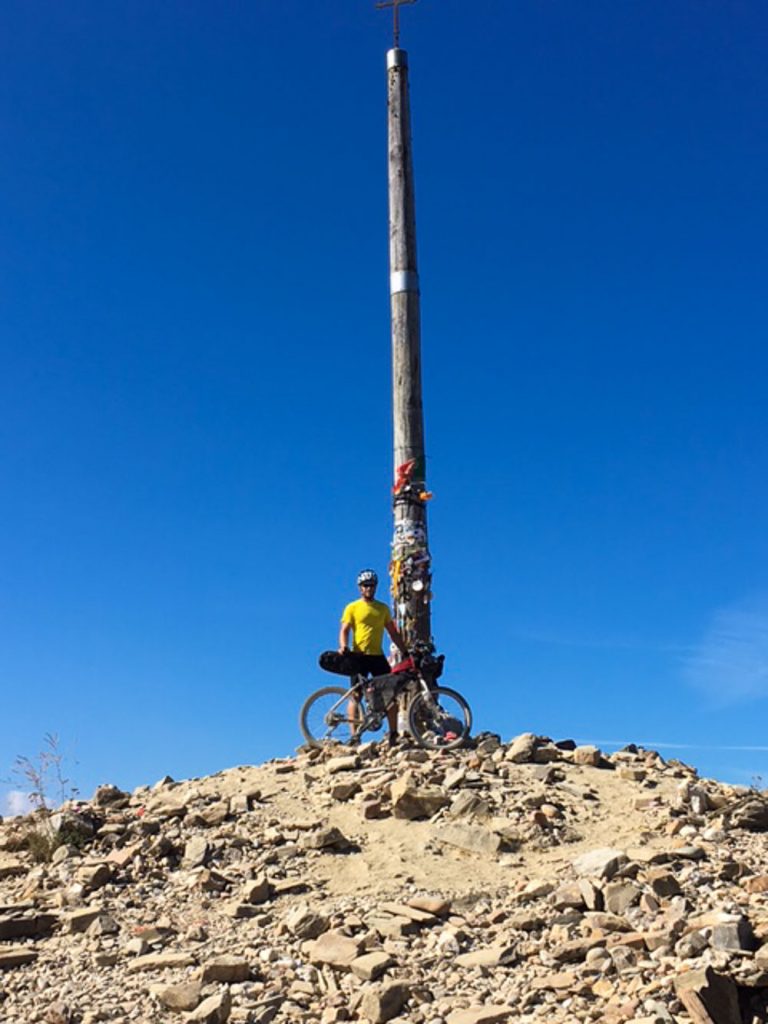
Cruz Ferro
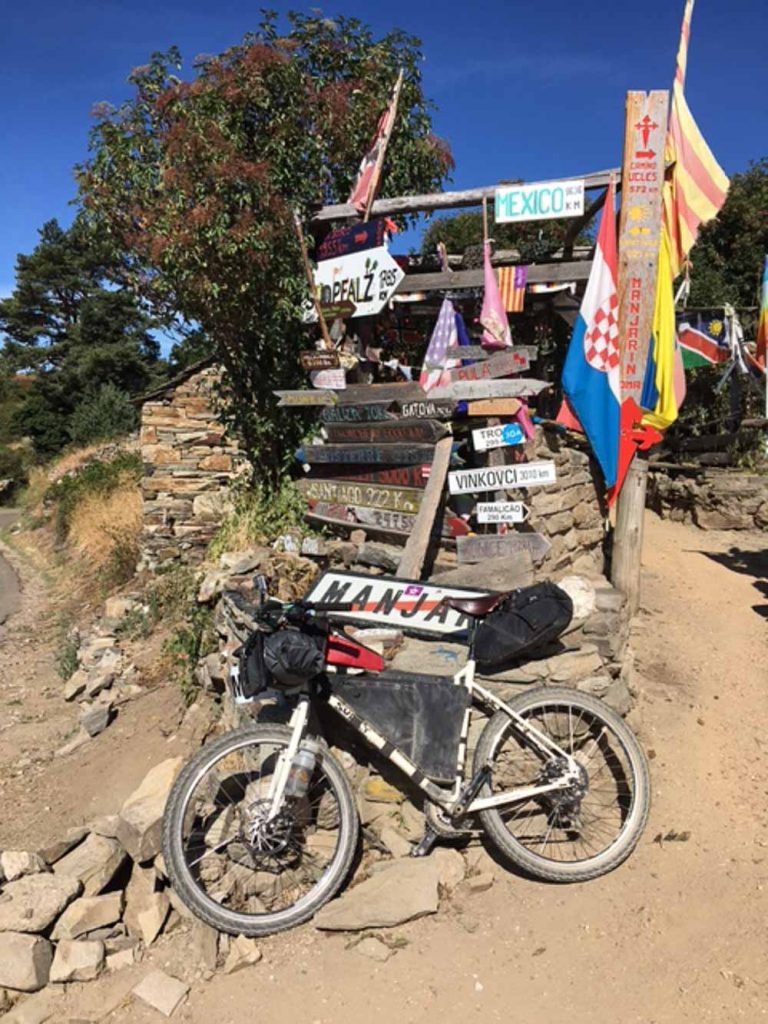
Manjarin
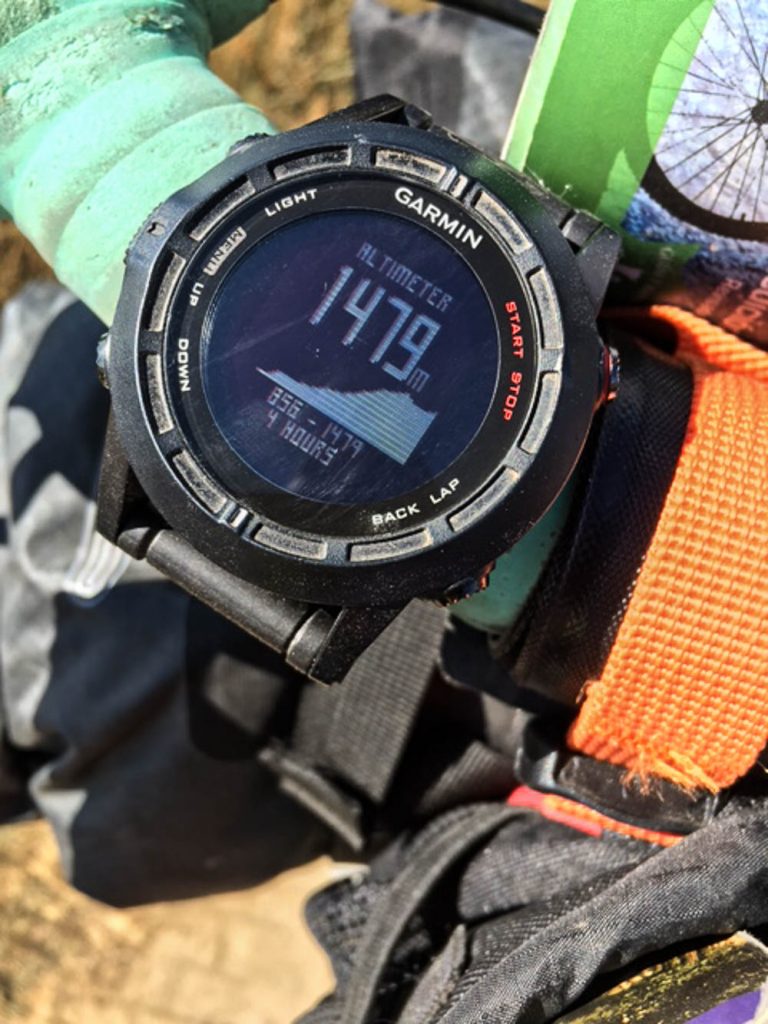
non-calibrated highest point on the camino
The descent is technical, fully of sharp rocks, and fairly narrow which makes sharing it with walking pilgrims challenging. I rode the first part, but felt like my bike was really taking a beating and felt sorry to keep ringing my bell for others to move out of the way. From Al Acebo, I decided just to take the road down, finishing the descent of over 1000m much faster than a super focused ride to avoid sharp rocks.
At the bottom of the hill, I realized that my rear quick release lever had worked its way loose when my rear wheel pulled out of the horizontal dropout while I was rolling it up onto a curve. I’m super thankful that this didn’t happen just a bit higher up on the descent- or it would have been bad news.

Molinaseca bridge
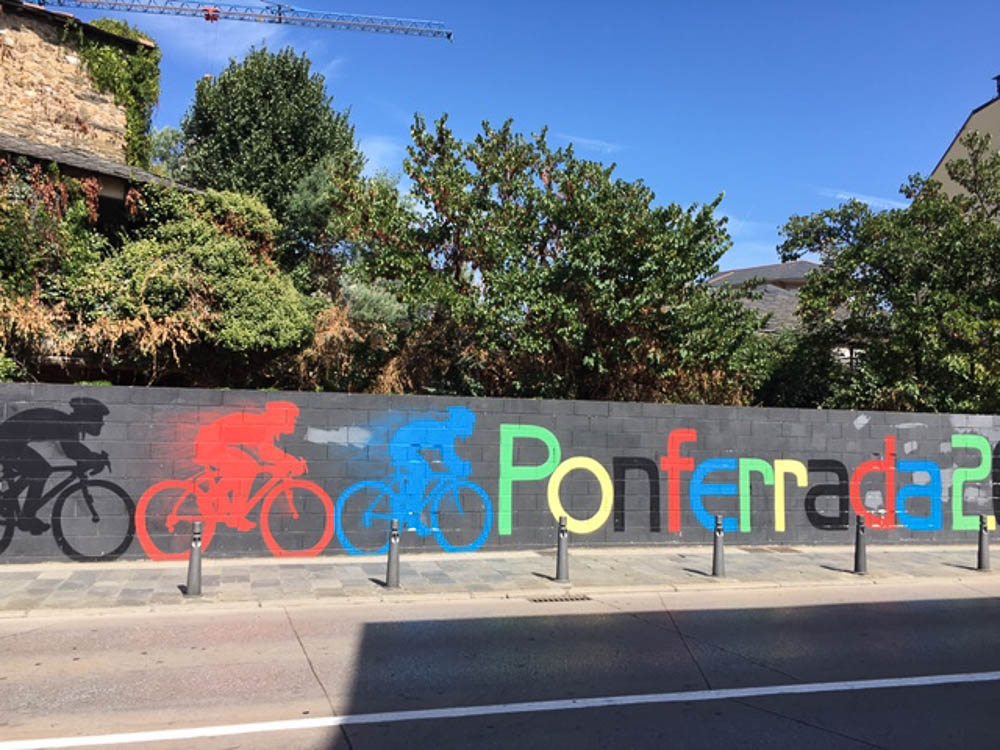
The rest of the ride was a breeze into Ponferrada, where I am staying at Albergue Guiana, which has quickly become one of my favorites on the Camino Francés. The big variable in albergues for cyclists is secure bike storage. Most advertise an enclosed space inside the building, but this one outdoes them all. Not only does it have a basement garage only for bicycles, the room also has a bicycle washing station with a pressure washer, two shop stands with tools, an air compressor to get dust off the bike, and even a sink with degreaser and a foot pedal. I think this wins best bike albergue hands down! After taking some time to use the facilities, my bike looks and feels great again, ready to finish the route to Santiago.
The albergue also does many little things well, like having an outlet and small shelf next to each bed to charge your phone overnight, combination lockers, a laundry area with a heater and dehumidifier, and a beautiful lounge and bar area all tastefully decorated. It’s a bit industrial, but really outdoes most others on so many fronts. Especially the other albergue here, which has been one of my least favorite along the way.
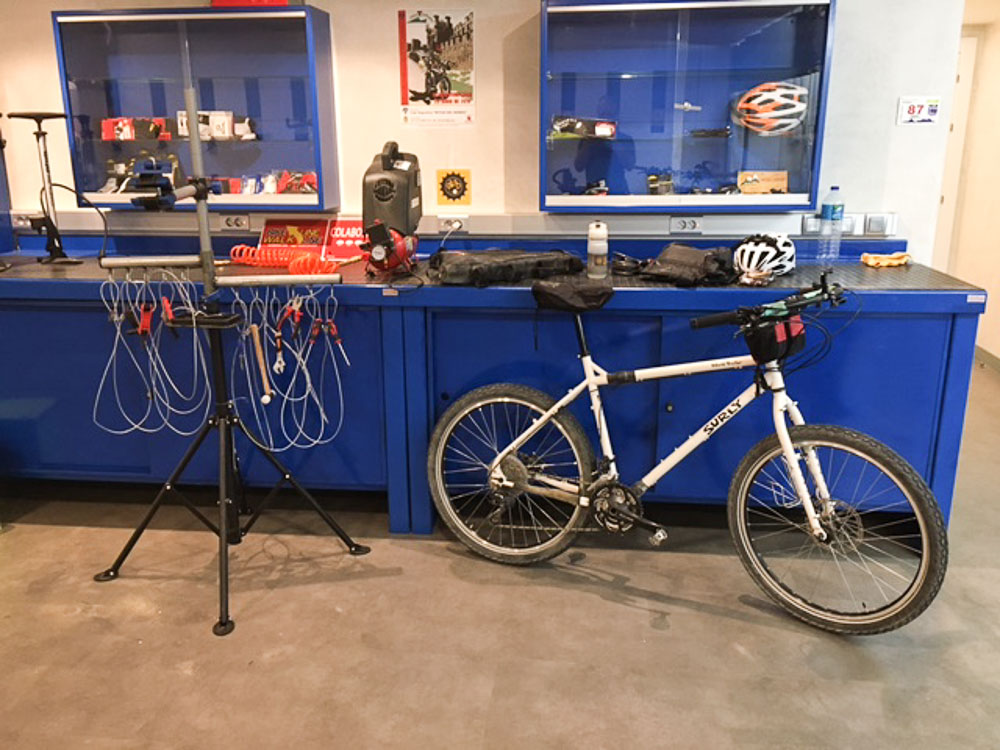
Clean Surly World Troller at the albergue’s bike shop area.
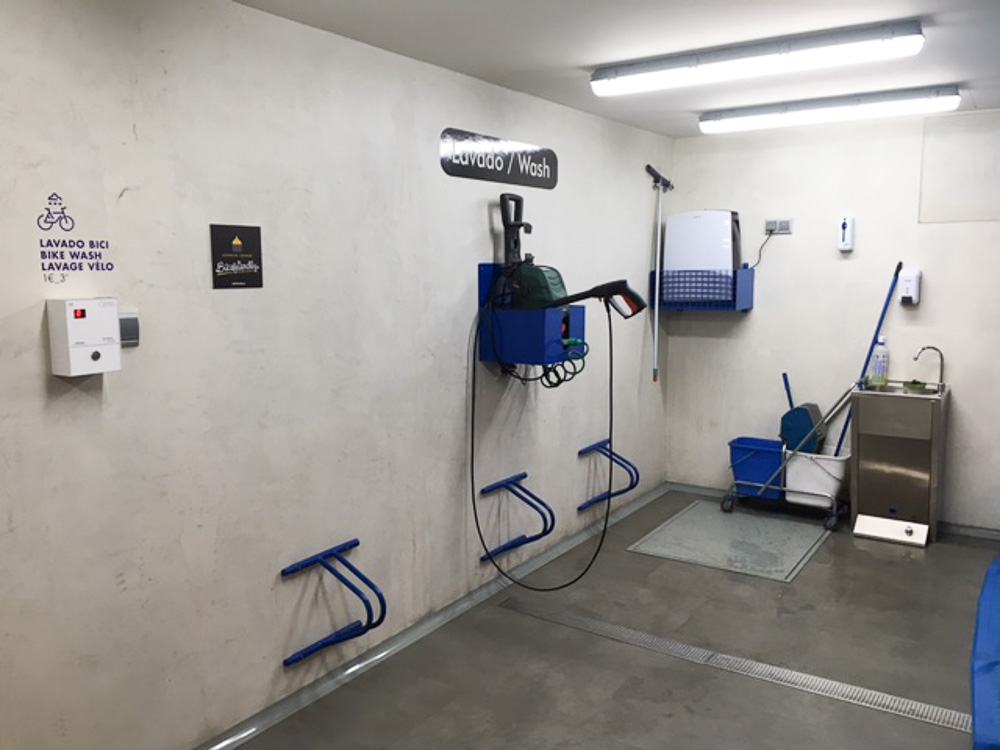
Bike wash
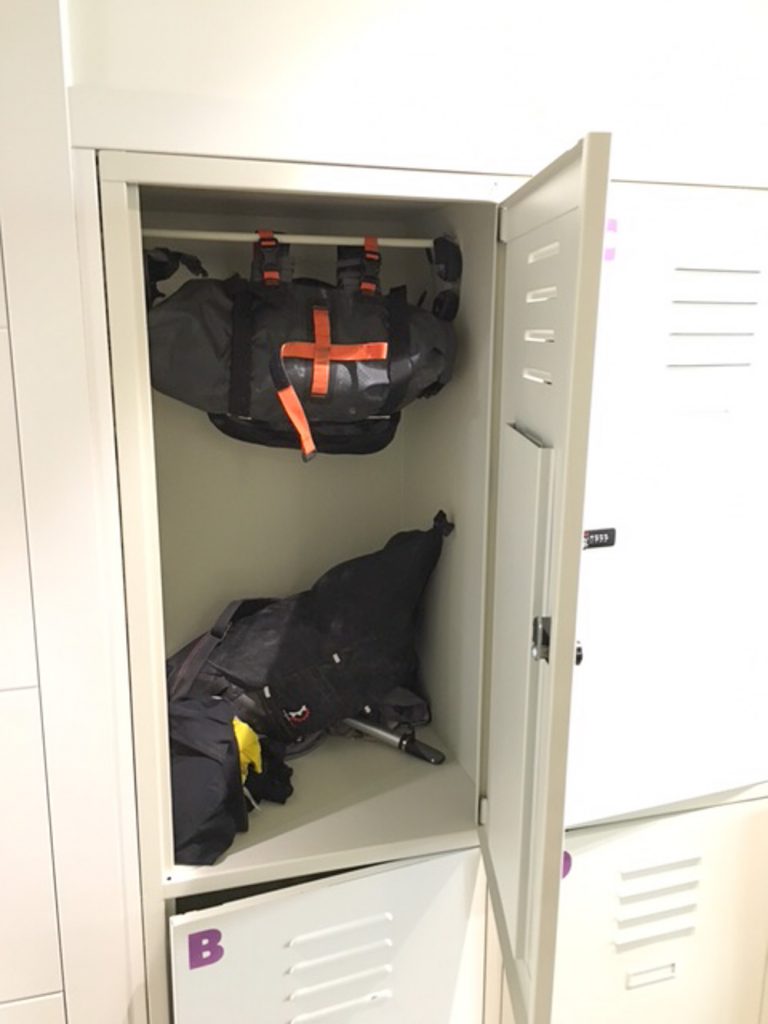
Personal combination lockers
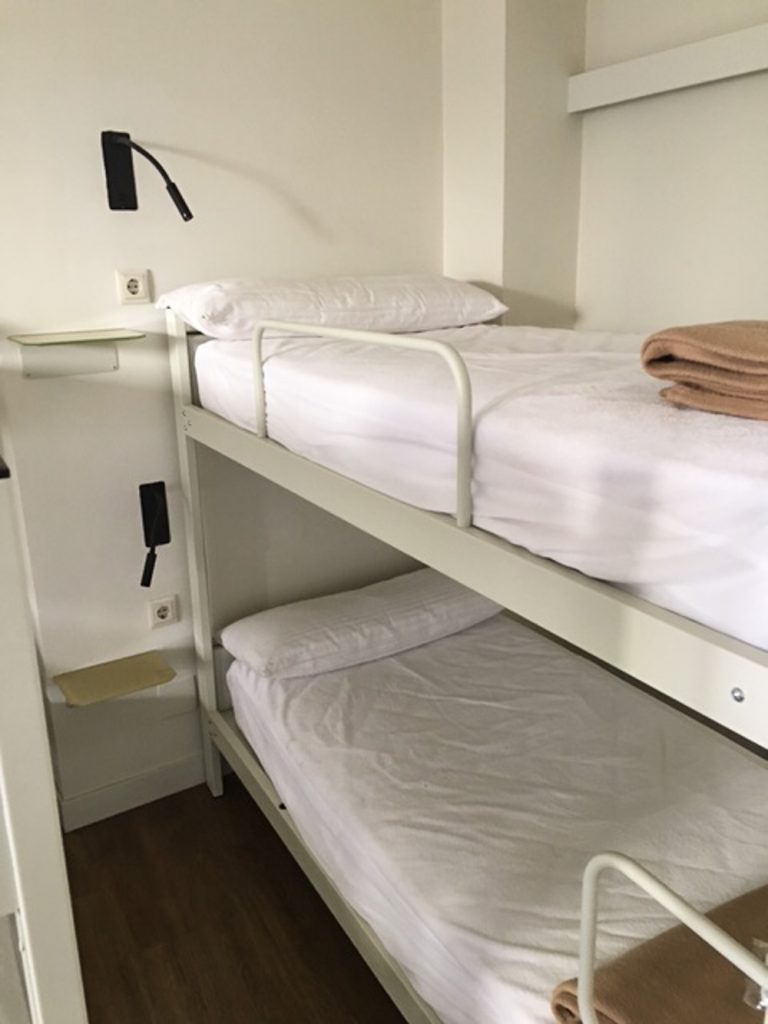
Disposable sheets and blankets
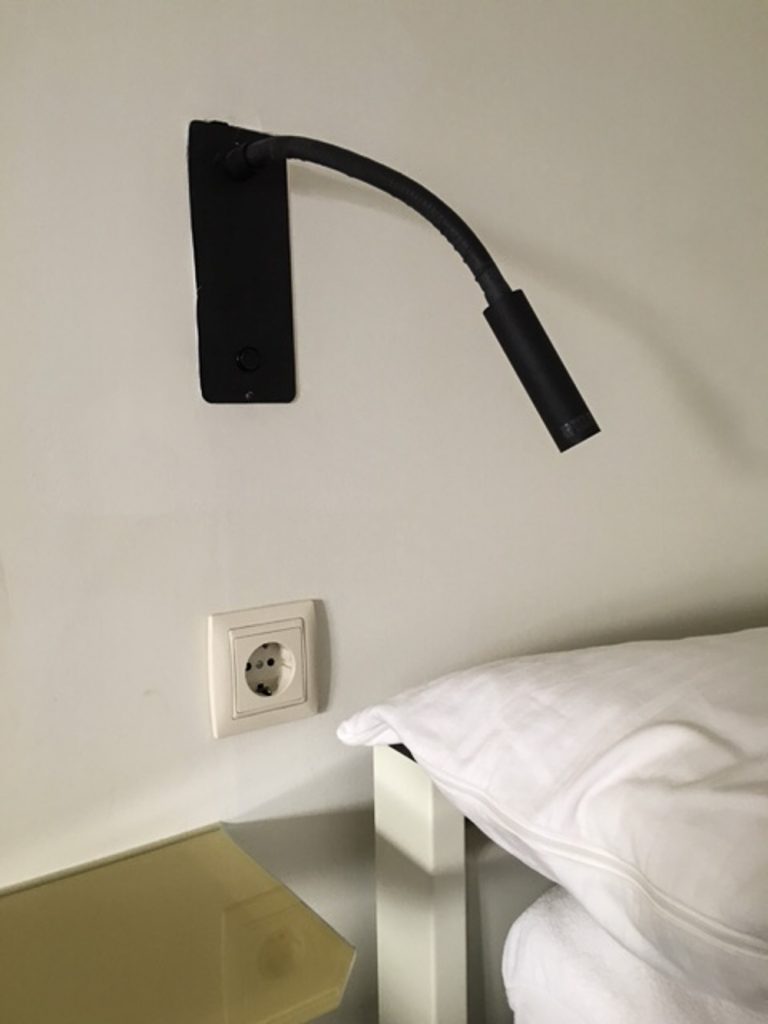
Personal outlet for charging phone near bed
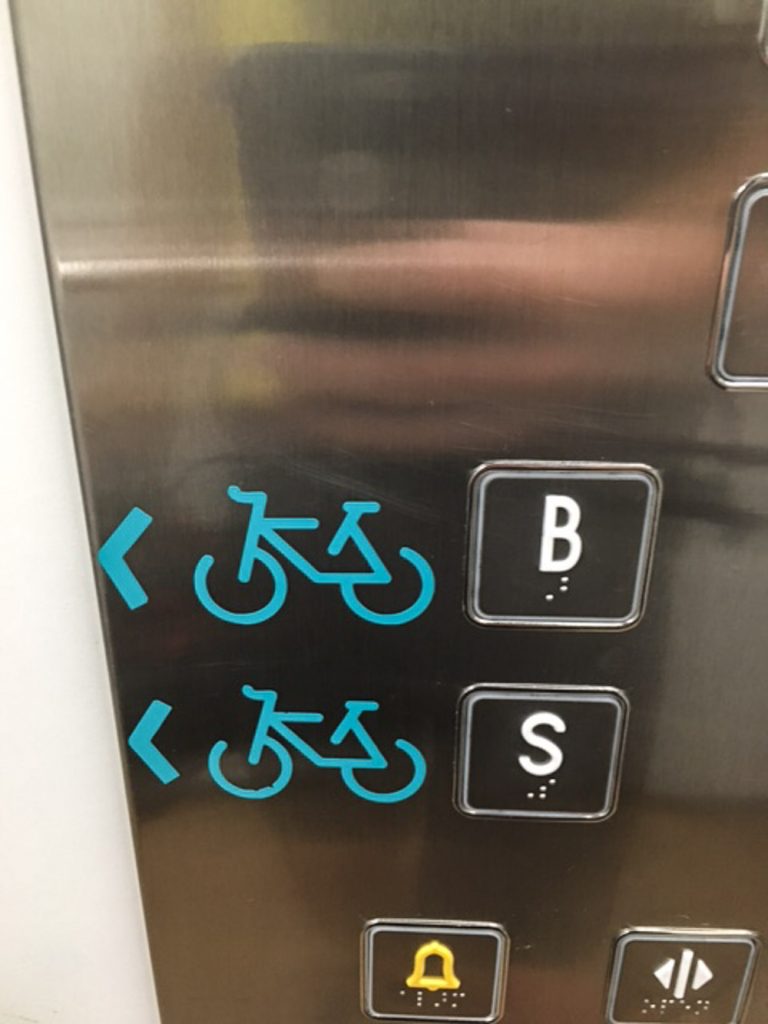
Elevator indicating bike garage floors
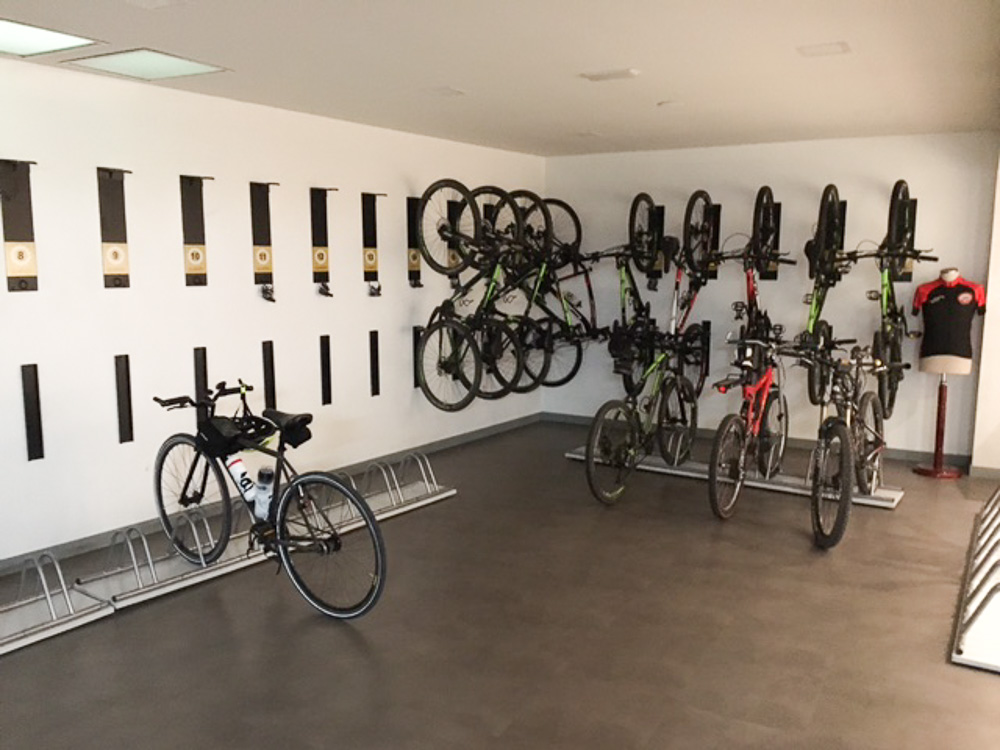
Bike storage area
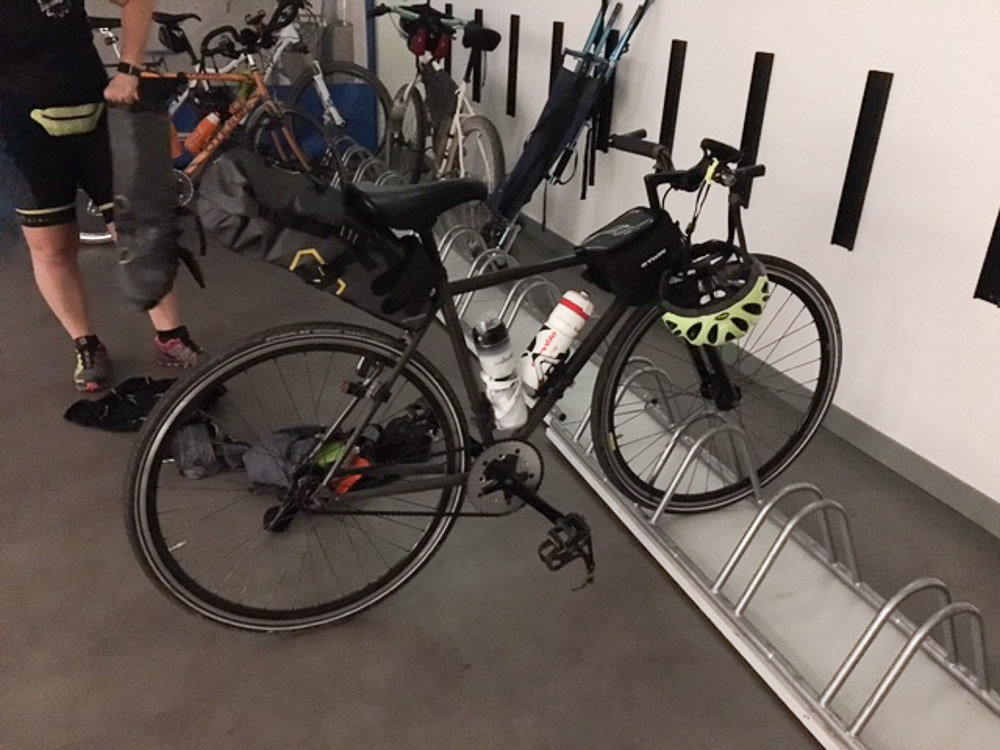
This fixed-gear bike belongs to a Brazilian woman riding the Camino Francés. She says her knees hurt.
By coincidence, there is a big festival here tonight with many artisan stands near the Templar Castle, local music, a lively vibe spreading between the city’s plazas. Eating a bacon pizza at the foot of an epic castle is a great way to round out the day with a little culture after the spectacular vistas from the mountains.
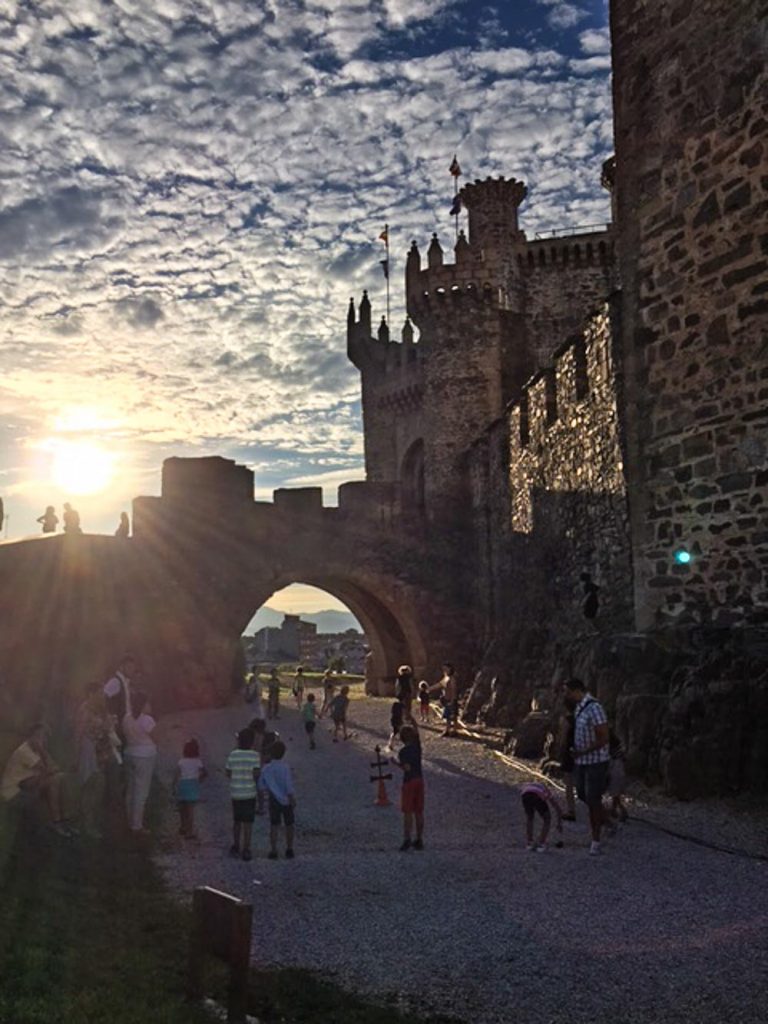
Templar Castle
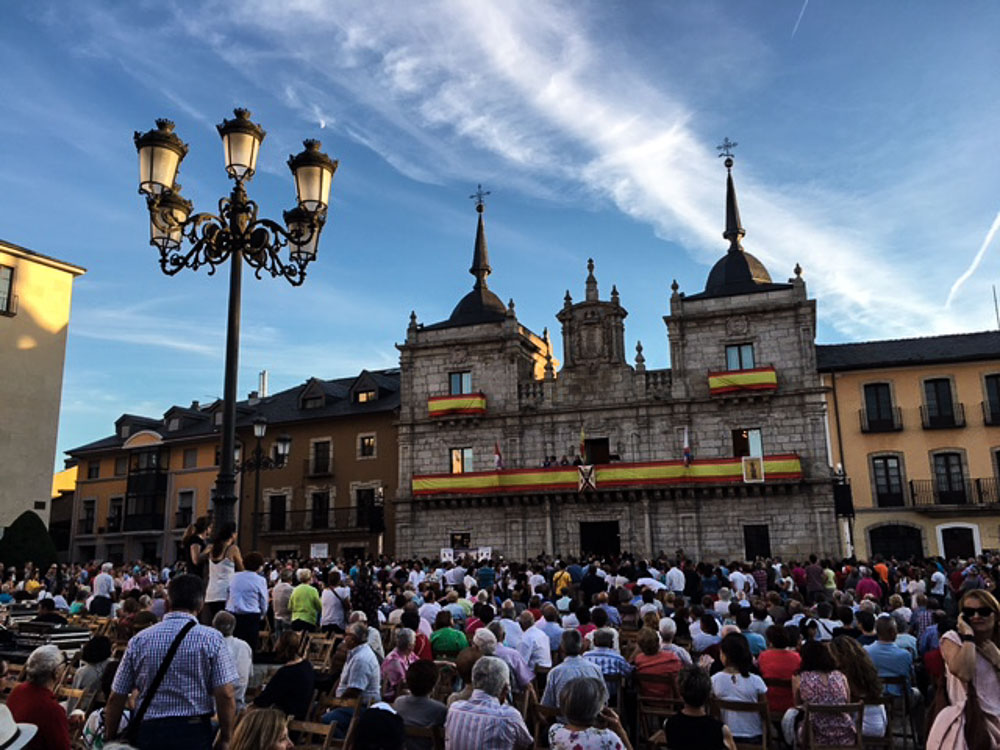
Festival
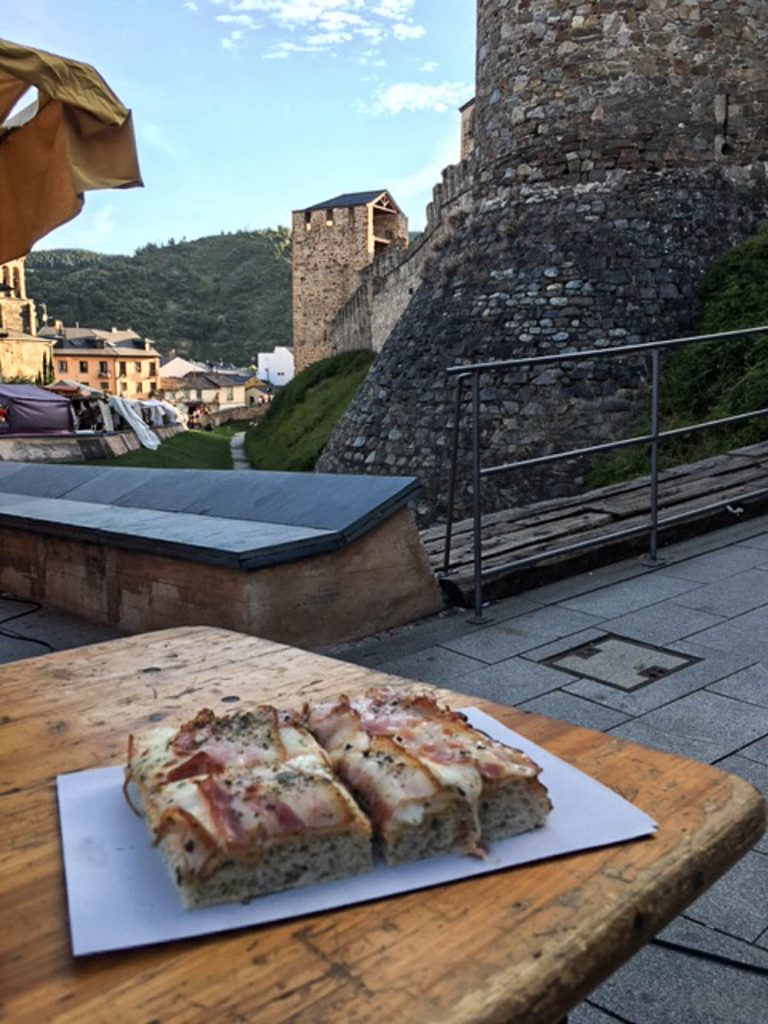
Bacon pizza for dinner
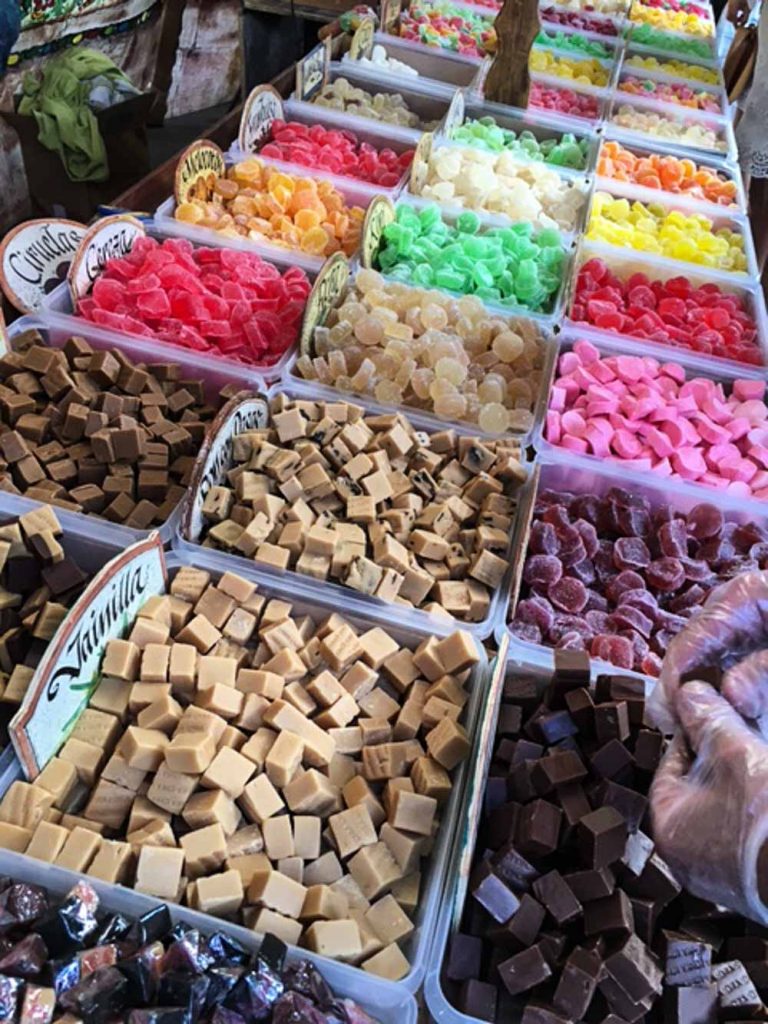
I’ve decided to try and get to Santiago in three days instead of the planned four, as the fourth day has a major rain storm in the forecast (more than 1” of rain and high of 65F). The days have been fairly short and easy, and I’d rather take a rainy day in Santiago and catch up on some work before heading off to Finisterre.

